slant/broth growth patterns and quadrant streak isolation
1/42
There's no tags or description
Looks like no tags are added yet.
Name | Mastery | Learn | Test | Matching | Spaced |
|---|
No study sessions yet.
43 Terms
A unique property of agar is that it melts around 85 degrees C but solidifies around 36 degrees C. This property is of melting and freezing at different temperatures is known as
hysteresis
in a __ plate, bacterial cells are distributed across the surface of an agar plate using an inoculating loop. The plate is divided into region and the inoculating loop is used to drag cells from one region to the next so that individual colonies form.
streak
When preparing test tubes for an experiment, the label should be on
test tube itself
When labeling an agar plate, the writing should go on the
bottom of petri dish
The agar used to solidify media is a mixture of polysaccharides from ___ an organism from the domain of life
red algae
eukaryotic
Performing a quadrant streak is effectively ___ cells as the loop is dragged across the agar surface
diluting
in a __ plate, a sample is suspended in molten agar which is then added to a petri dish and allowed to cool.
pour
preparing agar slants.1
Determine the volume of agar needed. We have found that 7 ml per 16 x 125 mm tube gives us a slanted surface with good surface area and a “butt” about 1 inch deep. Multiply the number of tubes needed by 7 ml and add 10% for waste.
preparing agar slants.2
Place the desired number of tubes in a rack and obtain an equal number of screw caps.
preparing agar slants.3
Weigh out and mix the desired volume of agar in a beaker. The beaker should be close to double the volume of agar to prevent spilling.
preparing agar slants.4
Add a stir bar, place the beaker in a microwave, and heat until the agar begins to foam. Watch carefully so that the agar does not boil over.
preparing agar slants.5
Wearing gauntlet gloves for protection, carefully remove the beaker to a stir plate and stir to make a uniform mix. If the agar is not completely dissolved, heat some more.
preparing agar slants.6
While stirring to keep the agar mixed, use a large syringe (w/o needle) or a serological pipette to distribute the required volume into each tube.
preparing agar slants.7
NOT
Sterilize using the liquid cycle on an autoclave, remove the rack safely, then tilt the tubes to allow the agar to solidify.
preparing agar slants.8
NOT
Place a cap on each tube but do not screw them down. That way the tubes are able to vent.
Which picture below displays echiniulate growth on an agar slant?
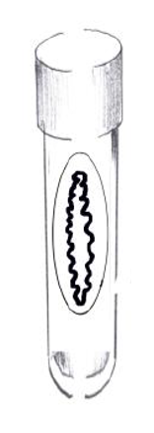
Which picture below displays filiform growth on an agar slant?
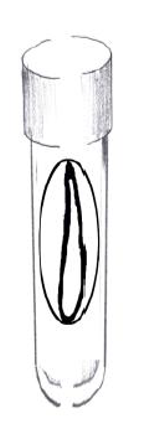
Which picture below displays arborescent growth on an agar slant?

Which picture below depicts a liquid culture that formed a flocculent?

Which picture below depicts a liquid culture that formed sediment?

Which picture below depicts a liquid culture with a pellicle?
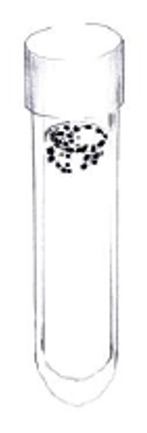
Which picture below depicts a turbid culture of bacteria?
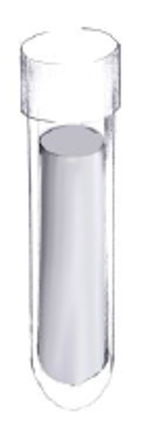
Correctly order the steps in performing a quadrant streak plate from start to finish.1

Correctly order the steps in performing a quadrant streak plate from start to finish.2
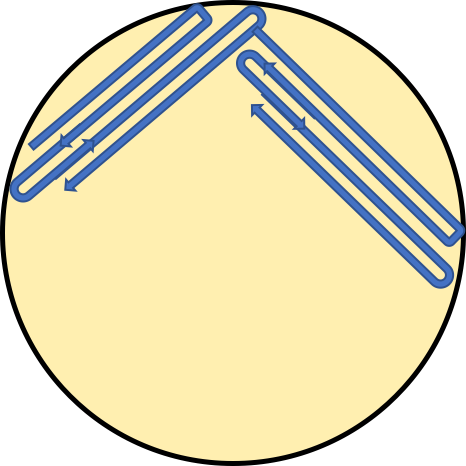
Correctly order the steps in performing a quadrant streak plate from start to finish.3
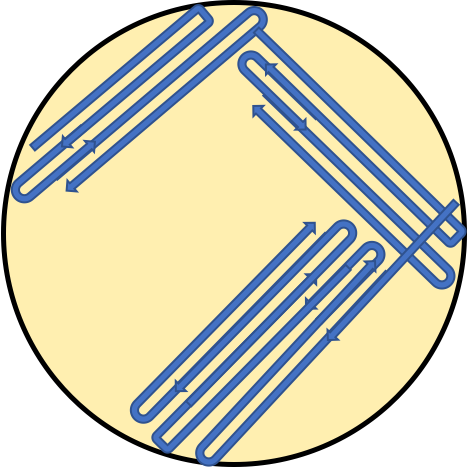
Correctly order the steps in performing a quadrant streak plate from start to finish.4
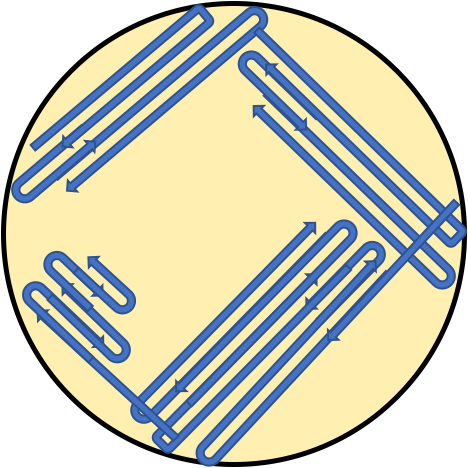
Correctly order the steps in performing a quadrant streak.1
Label the bottom of your plate with the unknown letter, your name, the date, lab section, and media type.
Correctly order the steps in performing a quadrant streak.2
Hold the loop in your dominant hand as if it were a pencil.
Correctly order the steps in performing a quadrant streak.3
Turn on the Bunsen burner and light it with a striker.
Correctly order the steps in performing a quadrant streak.4
Sterilize the loop following the proper protocol.
Correctly order the steps in performing a quadrant streak.5
Once the loop has cooled, it takes about 15 seconds, open the sample culture plate (without sitting the lid down) and touch the loop gently to an isolated colony.
Correctly order the steps in performing a quadrant streak.6
Place the lid back on the petri dish.
Correctly order the steps in performing a quadrant streak.7
Open the lid to your sterile petri dish and place your lid on the table, open side up.
Correctly order the steps in performing a quadrant streak.8
Holding your plate in your non-dominant hand, at a slight angle, touch your loop gently to the agar and streak it back and forth in a single quadrant.
Correctly order the steps in performing a quadrant streak.9
Sterilize your loop and turn your plate 60 degrees.
Correctly order the steps in performing a quadrant streak.10
Touch your cooled loop to the far corner of where you streaked and pull through the lines, and streak again.
Correctly order the steps in performing a quadrant streak.11
Repeat steps 8, 9, and 10 two more times.
Correctly order the steps in performing a quadrant streak.12
Replace the lid and sterilize your loop.
When storing agar plates, they should be stored ___ so the plates are agar . this _ on the agar surface
upside down
up
prevent condensation
Performing a second streak plate from an isolate from the first streak plate will ensure
that a clonal colony, where all cells have the exact same genetic composition, is used for subsequent analysis.
Agar plates should be stored in a 4 degree C fridge with
the agar up, so the lid is on the bottom and the agar is on the top, to prevent condensation on the agar surface.
If 7.5 grams of agar are added to 500 mL of water, what is the percent agar of the media? This is calculated by taking the grams of agar divided by the mL of water added and then multiplying by 100.
7.5/100 × 100 =
1.5
Agar agar, used to solidify media, is isolated from the organism that agar agar is solated from belongs to which domain of life?
red algae
eukaryote